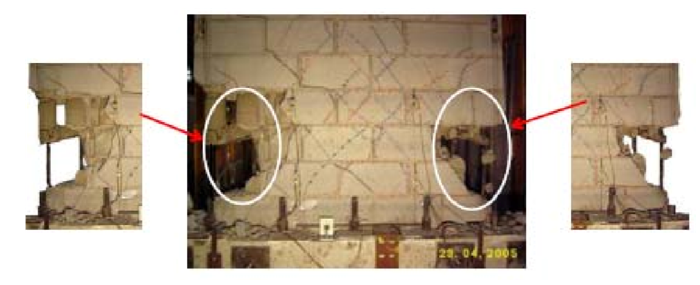El-Sokkary1 and K. Galal2
- Graduate Student, Department of Building, Civil and Environmental Engineering, Concordia University, Montréal, QC, H3G 1M8, Canada, h_elsokk@encs.concordia.ca
- Associate Professor, Department of Building, Civil and Environmental Engineering, Concordia University, Montréal, QC, H3G 1M8, Canada, galal@bcee.concordia.ca
ABSTRACT
Post earthquake reconnaissance showed that reinforced masonry structures are able to behave inelastically with a ductile behaviour during a strong ground motion, which enables the structure to dissipate high energy. Simple solid cantilever masonry shear walls, perforated shear walls, and coupled shear walls are examples of the seismic force resisting systems (SFRS) used in reinforced masonry structures. In addition to their loadbearing function, these systems are used to provide the required lateral stiffness and strength for resisting the lateral loads arising from wind or earthquakes. The aim of this paper is to provide a state-of-the-art survey on the experimental and analytical research conducted on different SFRS for masonry structures addressing important issues that should be considered in the analysis and design of reinforced masonry walls.
KEYWORDS: concrete masonry, shear walls, seismic, failure modes, ductility, state-of-the-art
A6-2



